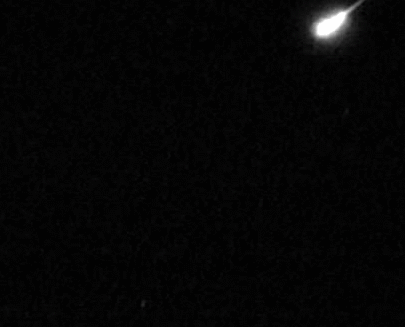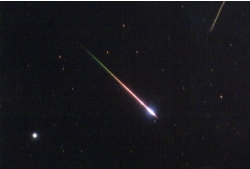Crestone
Weather Center
Crestone, Colorado

(photo courtesy of NASA)
- Meteor Showers -
There are currently 3 active meteors showers:

Southern delta Aquariids
Active until August 12th
Peak: Jul 29-30 2025 (Moon 27% full.)

alpha Capricornids
Active until August 12th
Peak: Jul 29-30 2025 (Moon 27% full.)

Perseids
Active until August 23rd
Peak: Aug 12-13 2025 (Moon 84% full.)

Meteor Showers in 2025
The dates in the table below are for the predawn hours in North America closest to the predicted peak of Earth’s passage through the meteoroid stream. Most showers are also active to some degree for a number of nights, sometimes on many nights, before and after the predicted peak date.
Important: The listed peak rate is what’s called the “zenithal hourly rate,” which is what a very lucky viewer would see under ideal conditions: a very dark sky free of moonlight or light pollution (stars of magnitude 6½ detectable naked-eye), with full dark adaptation and the radiant high overhead. Rarely are we so blessed, so most likely you’ll see lower rates than those listed.
| Shower | Radiant and its direction | Morning of maximum | Peak rate (per hour) |
Parent
comet or asteroid |
| Quadrantids | Boötes (NE) | Jan. 3 | 15-120+ | 2003 EH1 |
| Lyrids** | Lyra (E) | April 22 | 10-20+ | Thatcher |
| Eta Aquariids | Aquarius (E) | May 4 | 50 | 1P/Halley |
| Delta Aquariids | Aquarius (S) | July 25 to Aug. 5 | 20 | 96P/Machholz? |
| Alpha Capricornids | Alpha Capricorni (E) | July 29-30 | 5-10 | 169P/NEAT |
| Perseids** | Perseus (NE) | Aug. 12 | 100 | 109P/Swift-Tuttle |
| Orionids | Orion (SE) | Oct. 22, 23 | 20 | 1P/Halley |
| Taurids | Taurus (overhead) | Oct. and Nov. | 5-10 | 2P/Encke |
| Leonids | Leo (E) | Nov. 17 | 15 | 55P/Tempel-Tuttle |
| Geminids | Gemini (E) | Dec. 13 | 140 | 3200 Phaethon |
| Ursids | Ursa Minor (N) | Dec. 22 | 10 | 8P/Tuttle |
**Strong moonlight will interfere.
Number per hour max is for a moonless rural sky
|
There are meteor showers taking place every day/night of the year, but
many are hard to see. The meteor showers listed above are the easiest to
observe and provide the most activity. All of these showers are best seen after
midnight. Some are not even visible until after midnight. Particular attention
should be noted to the moonlight conditions. Showers that peak with
the moon at half or more full will be affected by the moonlight and will be
difficult to observe. While the dates noted above for when each shower is best seen
- remains
close to the same dates year after year, the moonlight conditions change considerably from
one year to the next. |